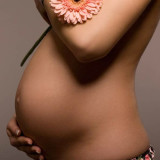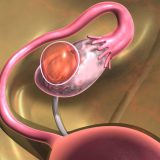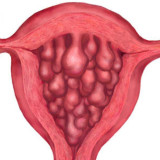Ttesticular cyst is characterized by the accumulated fluid within the tumor cavity. It usually does not give symptoms, and the operation is carried out only in case of changes that cause discomfort or enlarging swelling. However, any change or lump on testicle require medical advice to rule out the possibility of a malignant nature of the formation and to choose the appropriate treatment.
Causes
Testicular cyst is a lesion inside the epididymis that occurs as a result of blocking the pathway of fluid outflow. The accumulation of their epididymis in the cells leads to their increasing. The result is the cavity development. The causes of testicular cysts are still not exactly established. However, there is a relationship between the number of factors and tumor formation.
Often there is a congenital cyst in male newborns, usually on the right side. Bilateral cysts of the testis are rare. This is due to disorders during fetal development. In such cases, the testicular cyst is removed immediately after the birth.
The cause of testicular cysts development at an adult age can be scrotal injuries and venereal diseases.
Among the causes can also be called various infections and age. The most apt to this disease are men aged 40-60 years.
Symptoms
A small cyst usually does not show symptoms and is diagnosed only with a planned doctor’s examination or self-examination.
With enlarged testicle cyst can be felt bulge, a small seal in the testicle. There may also be groin or testicular pain. The development of the disease may be accompanied by the appearing of a new lump on testicle or foci of the liquid stagnation.
Enlarged testicle cysts can cause an increased size of the entire scrotum. The testicle area becomes sore and swollen, and the skin of the scrotum is red. The patient also feels heavy in the testicle with the cyst. When the lump on testicle besoms bigger, vessels, including the surrounding tissues, and nerve endings are squeezed. This increases the pain, which has a pulling character.
Diagnostic
The diagnosis of testicular cyst is based on a medical examination and ultrasound examination of the testicle.
First, the doctor conducts a conversation with the patient to study the history of the disease, which plays an important role in the diagnosis and the subsequent treatment. Then palpation of a lump on testicle is carried out.
Also, diaphanoscopic can be applied. It is held in a dark room where the doctor assesses the passage of light through the scrotum. Because the cyst is filled with fluid, it transmits the light. And in the presence of a cyst, the area “glows” pink.
However, the main tool for the diagnosis of the cyst is medical ultrasound. It confirms or refutes the assumption of a testicular cysts’ presence. It also allows to determine the size and localization of the cyst.
Often MRI of the pelvis is used to diagnose. This procedure allows to see the tissues and the organs in layered image, and more accurately examine the nature of the tumor.
The doctor may prescribe a testicular biopsy followed with histology and a blood test to see whether here is the presence of tumor or cancer markers.
Treatment
Most cysts disappear on their own and do not require treatment. This is also about testicular cysts. However, if the patient should be more careful to notice the size increasing in time.
If the testicular cyst does not disappear on its own or becomes larger, surgery is necessary.
During the surgery the doctor makes an incision in the scrotum and directly removes the cyst. Then stops the bleeding and sutures.
However, a more suitable method for the cyst removal is laparoscopic. It requires less time to perform and also has less risk of complications.
After the operation, it is necessary to maintain the scrotum in a certain position. For this purpose, special suspensions are used. Also, the patient is warned that the bandage should be removed no earlier than 2 days.
The postoperative period also includes:
Abstinence from physical activity for 2 weeks, including weight lifting and sexual acts, avoiding stress and tension. As a recommendation, doctors prescribe the diet without alcohol, with food mainly of plant origin.
The most gentle type of surgery is sclerotherapy. It involves puncturing the scrotum with the needle to remove the fluid from the cyst. Then sclerosing agents are injected into the empty cavity. They glute the walls of the cyst. But despite the relative simplicity of the operation, it is not used often. Because the operation carries the risk of infertility if it is performed unprofessionally.
Testicular cancer
Enlarged testicle cyst and its development may be the first signs indicating a cancer developing in the genital area. Therefore, when the tumor changes must be monitored.












